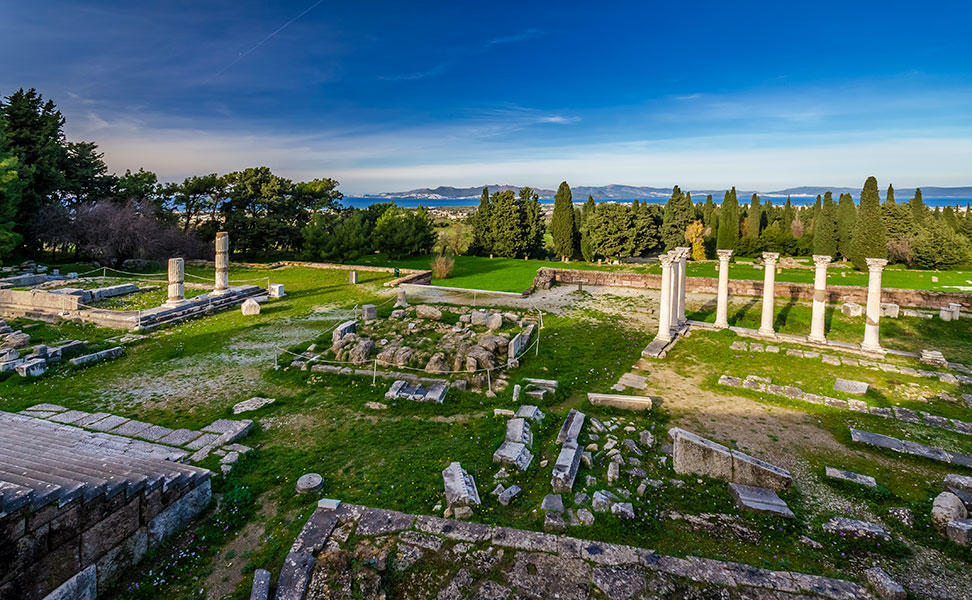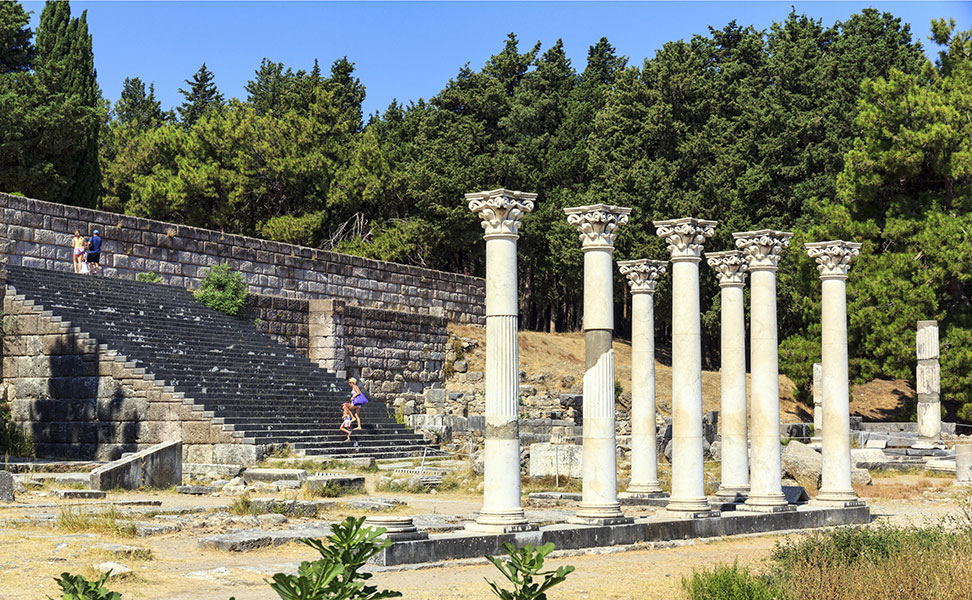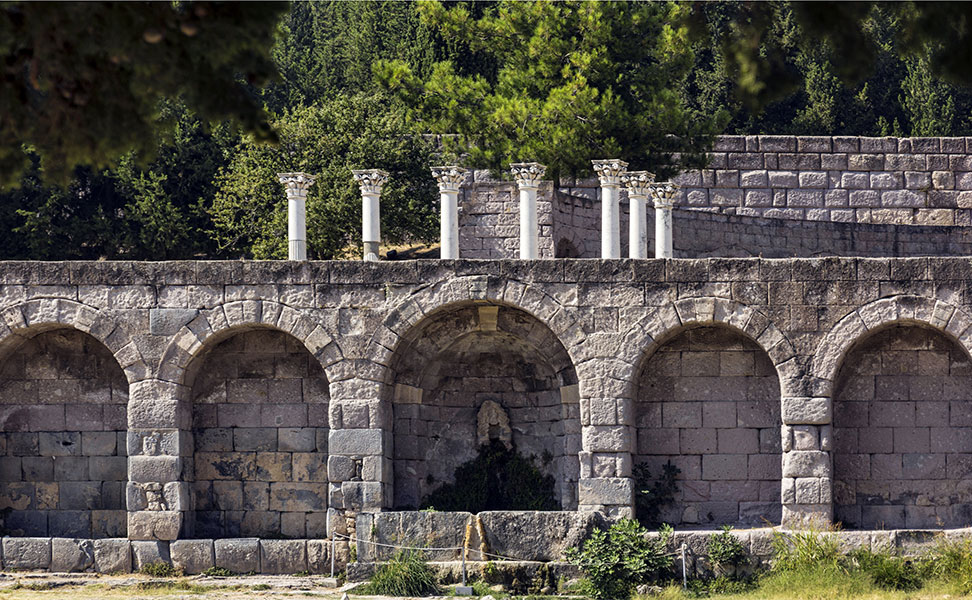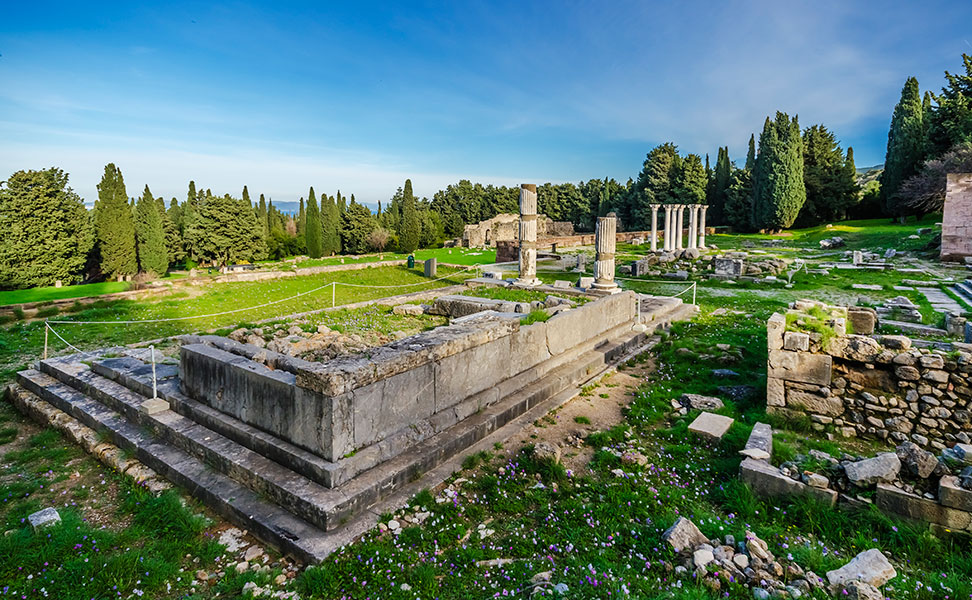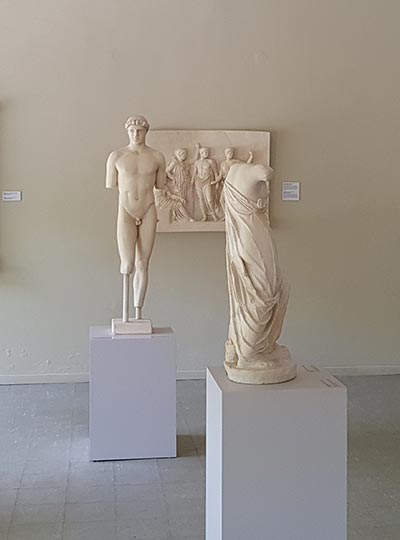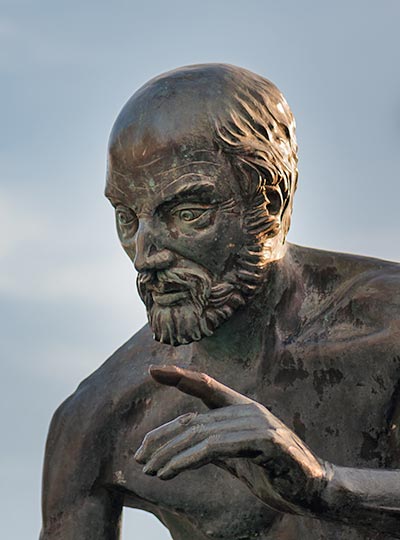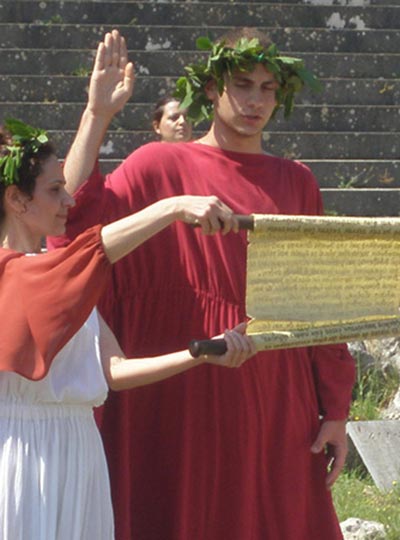Asclepeion of Kos
Healing temple, sacred to the god Asclepius
The most famed archaeological site on the island of Kos from antiquity to today, the Asclepeion sits on the slopes of a low tree-covered hill that gazes out to the sea and the Turkish coast beyond.
Based on interpretation of gravesite finds, the area seems to have been first used during the Mycenaean age. Throughout the ages that followed, the Asclepeion was used as a place of worship of various gods and goddesses, including Apollo, father of Asklepios, Zeus Ikesios (protector), Zeus Patroos and Athina Fatria among others. From the time of the establishment of the city of Kos in the 4th century BC, worship of Asklepios himself was evident at the site, which became one of the island’s most important public worship sites in the 3rd and 2nd centuries BC.
The Asclepeion, which was expanded and flourished during the Hellenistic and Roman years, gained widespread fame and as a result, became the central site for the worship of Asklepios. After 242 BC, the sanctuary of Asklepios was established as a place of refuge, and it was during this period that the Asklepian festivals were founded and subsequently held once every four years for musical and athletic competitions which were open to all Greek cities. The Asclepeion of Kos, as with other Asclepeions, followed the traditional Asclepian therapy, which consisted of a large dose of “miraculous divine intervention”. After the Hellenistic period, the Asklipion gain a more reliable reputation, with medical professionals using greater scientific methods for diagnoses and treatments.
In the 2nd century BC, the Asclepeion was brought under the protection of King Eumenes II of Pergamon and attained the monumental appearance that it has to this day, with the inclusion of various levels, Doric porticoes containing patient rooms, the reconstruction of the earlier altar to Asklepios as well as a monumental entrance to the sanctuary. The site saw additions and improvements being made until the 4th century AD when it was gradually abandoned following two successive earthquakes. During the subsequent paleo-Christian years, the church of Panayia Tarsus (a dependent of the monastery of Patmos) was built upon the ancient temple, while in later years the knights of the Order of St. John of Jerusalem appropriated building material from the temple for use in the construction of a medieval castle-fortress.
The temple itself was rediscovered by German archaeologist R. Herzog between 1901 and 1905, while during the 1930s, Italian archaeologists restored the site monuments, giving them their current appearance.
Opening hours: 01Nov – 31May Tue-Sun, 08:00-15:00 01Jun – 31Oct Mon-Sun, 08:00-15:00






